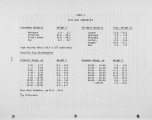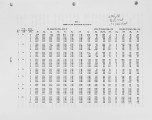| Title |
Detailed Local Measurements in the BYU Entrained Coal Gasifier |
| Creator |
Hedman, P. O.; Highsmith, J. R.; Soelberg, N. R.; Smoot, L. D. |
| Publisher |
University of Utah |
| Date |
1982 |
| Spatial Coverage |
presented at Newport Beach, California |
| Abstract |
A laboratory-scale entrained-flow coal gasifier has been used to investigate the local details of an entrained coal gasification process. Results from a series of mapping tests are reported for an oxygen/coal ratio of 0.92 and a steam/coal ratio of 0.27 using a Utah high volatile, low sulfur bituminous coal. Detailed radial measurements of coal gasification products (CO, CO2, H2, CH4, Ar, N2, He and O2) as well as sulfur pollutants (H2S, SO2, COS, and CS2) and nitrogen pollutants (HCN, NH3, and NO), from samples obtained with water-quenched sample probes, were measured at seven different axial stations down the 120 cm long reactor. Local carbon, sulfur, and nitrogen conversion from the coal to the gas phase have been determined from ashcarbon, ash-sulfur, and ash-nitrogen material balances respectively. These data have allowed the important reaction processes to be determined and provide insight into the chemical mechanisms of pollutant formation. The local data are also useful for comparison and validation of generalized entrained coal gasification models. |
| Type |
Text |
| Format |
application/pdf |
| Language |
eng |
| Rights |
This material may be protected by copyright. Permission required for use in any form. For further information please contact the American Flame Research Committee. |
| Conversion Specifications |
Original scanned with Canon EOS-1Ds Mark II, 16.7 megapixel digital camera and saved as 400 ppi uncompressed TIFF, 16 bit depth. |
| Scanning Technician |
Cliodhna Davis |
| ARK |
ark:/87278/s6fb55hp |
| Setname |
uu_afrc |
| ID |
3134 |
| Reference URL |
https://collections.lib.utah.edu/ark:/87278/s6fb55hp |






























